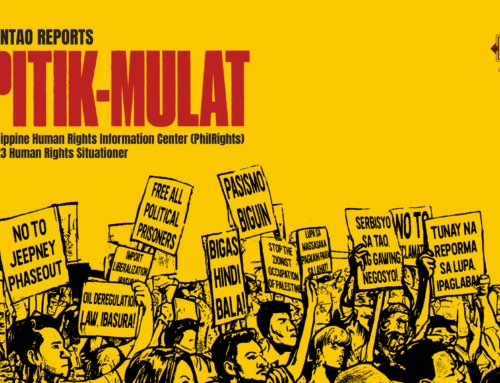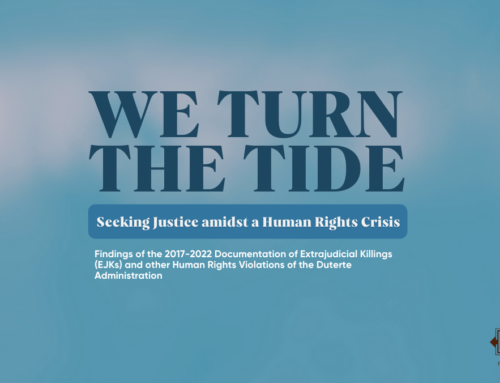by PhilRights Staff
On August 9 each year, countries around the globe celebrate the International Day of the World’s Indigenous Peoples. This is in commemoration of the first meeting of the United Nations Working Group on Indigenous Populations in Geneva in 1982. During this day, the world recognizes the various contributions of Indigenous Peoples (IPs) in our communities.
Out of around 370 million IPs in the world, around 260 million of them are inhabiting in Asia. The Philippines is home to an estimated 14-17 million IPs, according to the United Nations Development Programme (UNDP).
IPs in the Philippines
The Philippines is a signatory to the United Nation Declaration of the Rights of Indigenous Peoples and has passed laws like Republic Act 8371 or Indigenous Peoples Rights Act (IPRA). However, despite these efforts, IPs in the country still face various threats, primarily due to development aggression and militarization.
In Mindanao, for example, IPs are being threatened by increased militarization in their ancestral lands. It affects their children’s right to complete and quality education as Lumad schools regularly get shut down by the military due to anti-communist campaigns (). Lumad teachers–and even students–are being red-tagged and asked to surrender as rebels.
There are also issues of displacement in these militarized lands. Because of alleged harassment and human rights violations from the military, IPs are forced to leave their homes. They vow to go back, however, to reclaim their lands once martial law is lifted.
These cases in Mindanao paint a picture of struggle for the Lumads. Elsewhere in the country, there are still other ethnic groups who have the same concerns–and these concerns must be heard and addressed by the State.
SIPA 2018
It is only right that we also recognize that IPs have their own voices in various grassroots and national issues. Thus, it is important that we create an avenue for our IPs to convene and talk about their concerns and decide for themselves on what actions they want to take.
One event that reach out to the IPs to consult about their situation is the State of the Indigenous Peoples’ Address or SIPA.
On its tenth year, SIPA 2018 gathered a total of 28 participants from 15 IP communities in the country. This was organized mainly by Legal Rights and Natural Resources Center (LRC-KsK), LILAK (Purple Action for Indigenous Women’s Rights), and Mindanao Peoples’ Peace Movement (MPPM).
As told by the conveners, the SIPA aimed to have an “intimate gathering and honest discussion” on various grassroots and national concerns.
The SIPA used a participatory approach throughout the whole program. All participants were given the chance to share their insights.
“SIPA gave opportunities for the Indigenous peoples in the country to be able to speak and update each other on what is really happening on their respective ancestral domains,” LILAK said.
Participants also engaged in discussions about the Bangsamoro Organic Law (BOL), federalism, mining, violence inside the ancestral domain, and human rights violations.
The IPs also critiqued the implementation of IPRA, with the view that the government ought to do better in ensuring that government agencies and their programs deliver the promised benefits of inclusive development. They asserted their opinions and issued their call for accountability as they point out the lack of effort from the State and other institutions.
Amplifying IPs voices
Today’s occasion should serve as a reminder to the State that the concerns of IPs must be heard. As many still face multifarious threats to their safety, culture and way of life, their voices demand access and a seat at the table.
It is also important to call on the State to perform its duties and to create more avenues for the IPs to be involved in the national discourse–to amplify their voices rather than silence them.
Photo courtesy of LILAK (Purple Action for Indigenous Women’s Rights).








